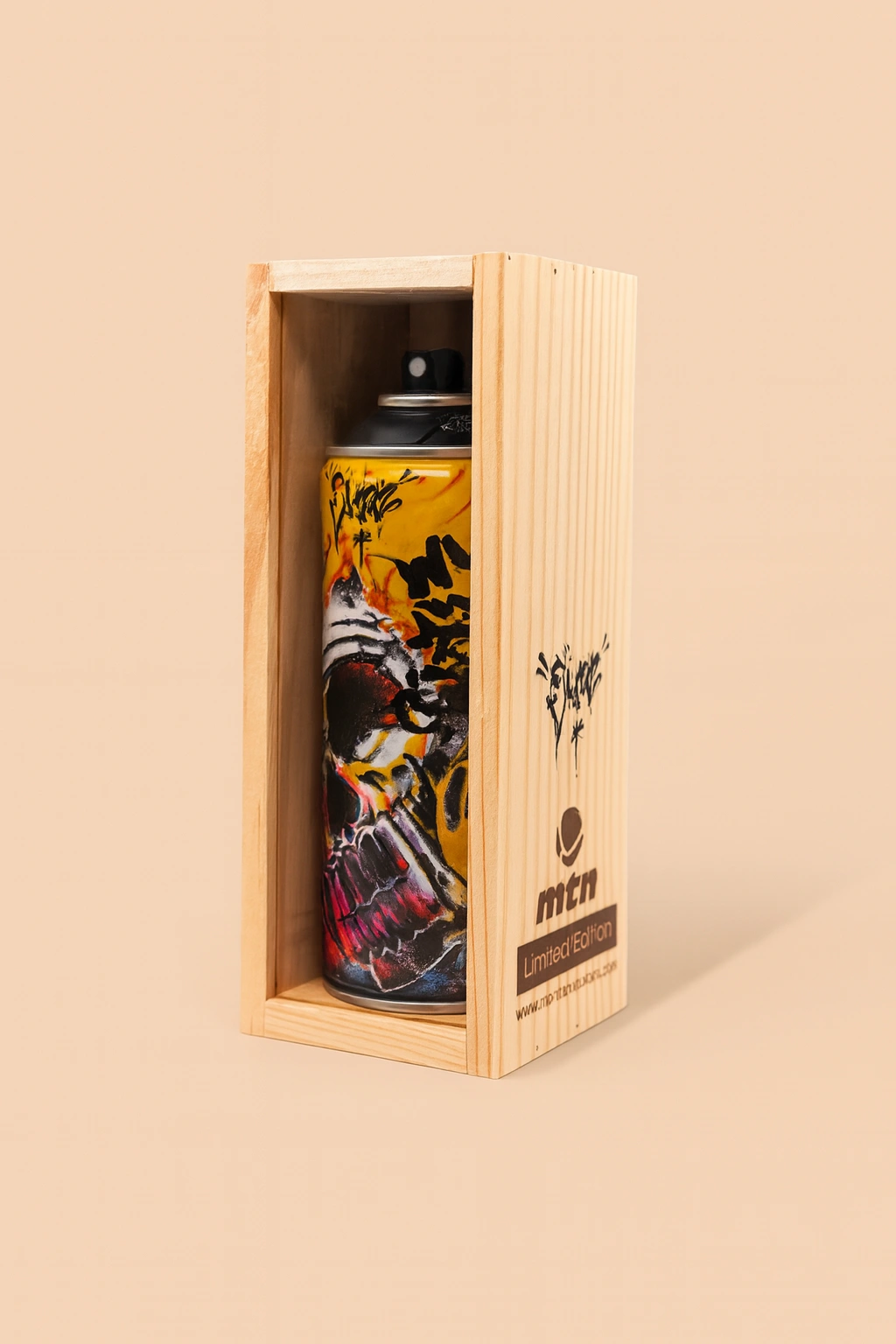Santiago Montoya’s 2023 artwork, Clyde, stands as a striking example of the artist’s continued exploration of currency as both a material and a conceptual tool. Known for his provocative works that challenge our perceptions of value, Montoya uses paper money, mounted on stainless steel and encased in an acrylic frame, to create a visually compelling piece measuring 64 x 61 cm. Through this unique medium, Montoya comments on global economic systems, materialism, and cultural nostalgia, inviting viewers to reconsider the symbolic power of money beyond its traditional financial context.
The Artist: Santiago Montoya
Born in Colombia in 1974, Santiago Montoya has become internationally recognized for his innovative use of currency in art. His works often feature intricate collages composed of banknotes from around the world, arranged to form abstract or representational compositions that reflect on economic and political themes. Montoya’s fascination with money extends beyond its practical function; he views it as a universal language that connects individuals across cultures while also dividing them through economic disparities.
Montoya’s work has been exhibited in prestigious galleries and art fairs globally, including the Halcyon Gallery in London, which represents his work. His pieces often raise critical questions about wealth, power, and the illusions that financial systems create, positioning him as one of the most thought-provoking contemporary artists working today.
The Concept Behind Clyde
The title Clyde draws inspiration from the iconic orange ghost character in the classic arcade game Pac-Man. Through this reference, Montoya cleverly fuses elements of popular culture with deeper socioeconomic commentary. Clyde, often seen as the least predictable of the four ghosts in the game, embodies an element of chaos and unpredictability—concepts that resonate with the fluctuating nature of global economies.
By recreating Clyde’s familiar visage using real paper money, Montoya challenges the viewer to reflect on the omnipresence of economic forces within daily life. The juxtaposition of a nostalgic cultural symbol with tangible financial instruments raises intriguing questions:
•Is money just another game we play?
•How does popular culture influence our perceptions of wealth and success?
•What happens when cultural nostalgia is commodified through currency?
These layers of meaning allow Clyde to transcend its playful facade, engaging audiences on multiple intellectual and emotional levels.
Material and Technique
Montoya’s signature technique involves meticulously cutting and arranging banknotes to create intricate mosaics that are both visually striking and deeply symbolic. In Clyde, the materials used—paper money, stainless steel, and acrylic—each contribute to the overall narrative:
Paper Money:
•Symbolizes global economic value, trust, and power.
•The use of different currencies introduces the idea of international interconnectedness and economic disparity.
•The intricate layering of notes creates depth and texture, reinforcing the complexity of financial systems.
Stainless Steel:
•Provides a sleek, industrial backdrop, emphasizing the contrast between the ephemeral nature of money and the permanence of art.
•Reflects strength and durability, potentially commenting on the resilience of economic institutions despite fluctuations.
Acrylic Frame:
•Protects the artwork while enhancing its visual appeal, suggesting the fragility of financial constructs and their need for safeguarding.
•The transparency of acrylic symbolizes the illusion of transparency often associated with economic systems.
Together, these materials create a visually dynamic composition that balances fragility and permanence, nostalgia and critique.
Symbolism and Themes
The deeper meaning behind Clyde can be analyzed through several key themes that are recurrent in Montoya’s work:
The Commodification of Culture
By using real currency to depict an iconic pop culture figure, Montoya underscores how cultural symbols are often commercialized for profit. The artwork questions whether nostalgia itself has become a tradable commodity, reinforcing the idea that everything, even childhood memories, can be assigned a monetary value.
The Illusion of Wealth
Montoya’s meticulous assembly of paper money forms a striking visual, yet it also highlights the illusionary nature of wealth. Despite its aesthetic appeal, the inherent value of the banknotes is called into question—do they truly hold meaning outside of the context of financial systems? The artist urges viewers to reconsider their relationship with money and the power it holds over society.
Globalization and Interconnected Economies
Using banknotes from various countries, Montoya presents a commentary on globalization and the interconnectedness of economic systems. Clyde, a universally recognized symbol, is composed of currencies from different regions, signifying the blending of cultures and economies in the modern world.
The Fragility of Financial Systems
Despite their perceived strength, financial systems are as unpredictable as Clyde’s erratic movements in Pac-Man. Montoya subtly critiques the volatility of markets and the way they can be influenced by external forces, reminding viewers of the delicate balance that underpins economic stability.
Exhibition and Reception
Clyde was unveiled at the renowned Halcyon Gallery, where it garnered significant attention from art collectors and critics alike. The gallery praised Montoya’s ability to blend fine art with socio-political commentary, highlighting the intricate craftsmanship and layered messaging within the piece.
Collectors and art enthusiasts have responded enthusiastically to Montoya’s unique approach, appreciating how he transforms everyday objects (such as money) into profound artistic statements. The work has also sparked discussions about the role of contemporary art in addressing complex social issues, positioning Clyde as both a conversation starter and a visually captivating piece.
Montoya’s Artistic Legacy
Santiago Montoya continues to push the boundaries of contemporary art by redefining how materials, particularly money, can be used to convey powerful narratives. His body of work challenges audiences to reflect on their own perceptions of value, consumerism, and global connectivity.
Through pieces like Clyde, Montoya reminds us that art has the power to reshape our understanding of familiar objects and concepts. His innovative use of currency not only elevates it to the realm of fine art but also serves as a reminder of the transient nature of wealth and the enduring power of artistic expression.
Impression
Santiago Montoya’s Clyde is more than just an art piece—it’s a thought-provoking exploration of wealth, culture, and identity in an increasingly globalized world. Through his masterful use of materials and his keen cultural insight, Montoya presents a powerful narrative that resonates across cultural and financial boundaries.
By transforming ordinary banknotes into an extraordinary visual statement, Clyde invites viewers to question their perceptions of money, nostalgia, and the role of art in shaping contemporary discourse. Whether viewed as a critique of materialism or a celebration of cultural icons, Montoya’s work stands as a testament to the power of artistic innovation in an ever-changing world.
No comments yet.









